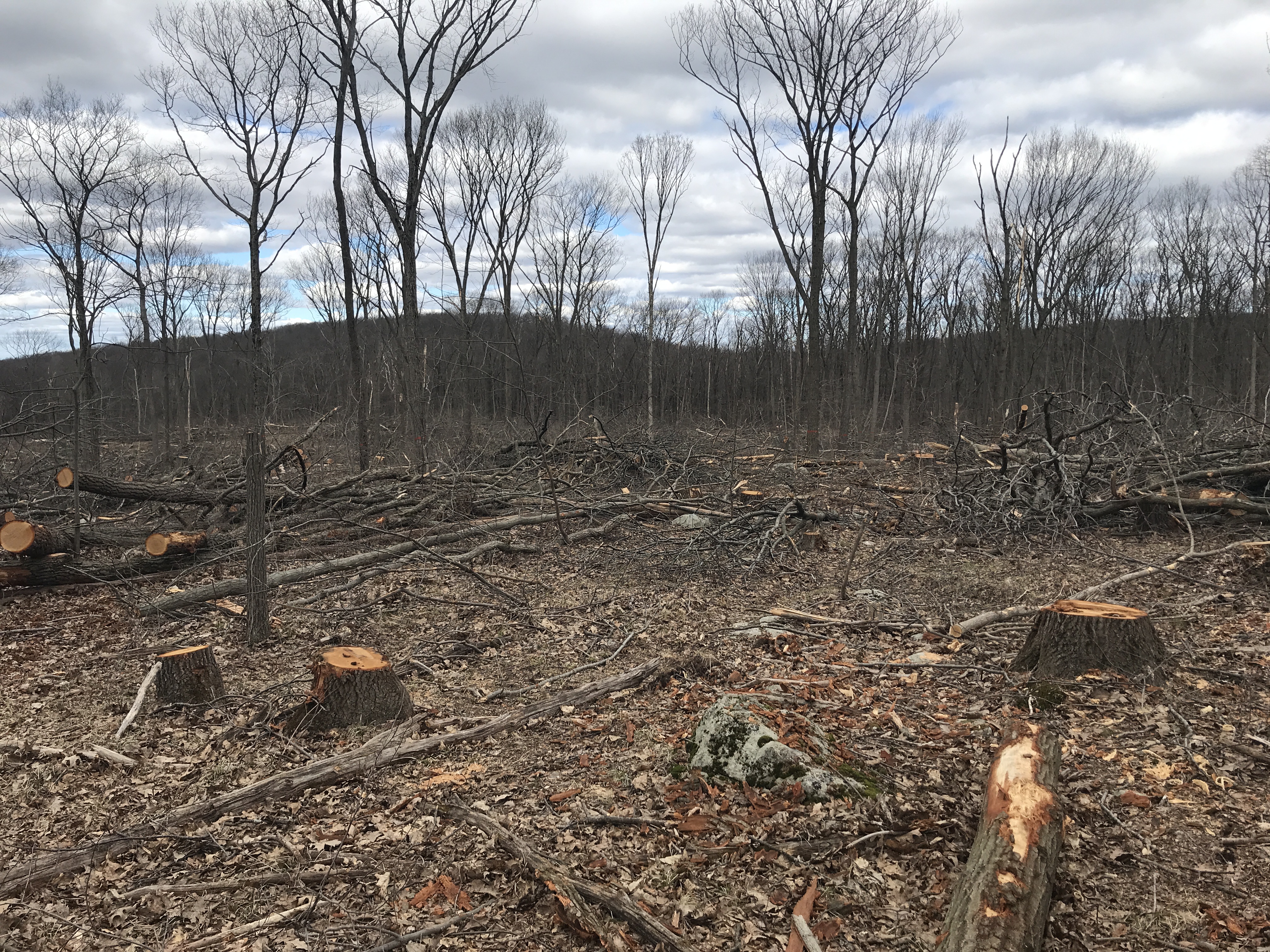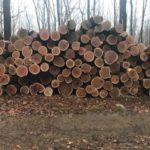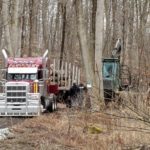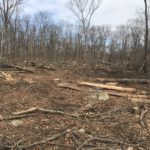Although our group informed the NJDEP Division of Fish and Wildlife of the wet saturated ground, the logger/contractor from NYS, “Environmental Forest Products“, was allowed to bring their equipment in. Once again, it was a mild winter and the weight of the heavy equipment caused severe rutting and major soil disturbances. This is exactly what we saw last year on Sparta Mountain on Stand 18. This now gives us 2 years of solid proof that this is not an ecological program. Our natural resources in this High Conservation Value Forest of the Highlands are being destroyed by the very department that is supposed to protect it. We must not allow this to continue.
We have documented many of these egregious ecological disturbances and thankfully the contractor was done cutting the 9.2 acres cut by the deadline of March 31st, 2020. The contractor still has his equipment on-site and since now we have amphibian species like spotted salamanders and wood frogs that are breeding and migrating, we do not want him to move his equipment.
Our group, via email, has informed the NJ Division of Fish and Wildlife of these amphibian species and if the contractor is allowed to move his equipment this will provide us with additional proof of the ecological negligence by the NJ Division of Fish and Wildlife. Below we have provided you with just some of the problems and issues that continue to prevail in the destruction of our intact contiguous Highland Forests. We encourage our supporters and followers to take action by writing to Governor Murphy and Commissioner McCabe.
Governor Murphy’s email is constituent.relations@nj.gov
DEP Commissioner McCabe’s email is Catherine.McCabe@dep.nj.gov
Some Key Pointers to Include In Your Email:
1) NJ public lands belong to us all, and our natural resources need protections- not to be logged. Our forests provide us with many ecosystem services, like clean air, water, and CO2 sequestration. They also help prevent runoff and flooding which is a problem in NJ. We need to protect our forests from further deforestation efforts.
2) Deforestation is an activity that NJ should not be involved in. It directly increases GHG emissions and goes against the Governor’s goal of GHG reduction targets.
3) The IPCC has clearly stated that protecting standing forests is the #1 solution to climate change. Why is NJ DEP allowing the deforestation of hundreds of acres throughout the state? This runs counter to the IPCC’s mandates!
4) The latest peer-reviewed science states that larger trees sequester MORE carbon than younger trees. NJ needs to protect large contiguous parcels of forested land like in the Highlands and Pinelands from further deforestation.
5) You do not “create” habitat by destroying habitat! Dr. Joan Maloof, Forest Ecologist, from the Old Growth Forest Network, last May, reported at our lecture how “unmanaged” forests are more biodiverse and are healthier in the number of species than “managed” forests.
See a short 4-minute video from Dr. Maloof’s Old Growth Forest Network here
Big trucks and equipment arriving on Stand 8
March 3rd, 2020 The Logging Begins
Severe Rutting and Major Soil Disturbances have been documented with almost 8 inches filled with water! This is not good for the sensitive amphibians that are in the area. This rut was less than 100 feet from a vernal pool.
Tree #1 that was cut marking the “Highlands Trail” as the logger’s equipment was too large.
Here’s the bottom part of the #1 “Highlands Trail” tree that was cut along the access road.
Tree #2 marking the “Highlands Trail“, that was taken down by the large logging equipment.
Rutting so severe that a person can lay in the rut and still have clearance above.
Here’s a section of the cut on Sparta Mtn. The photo was taken on April 4th, 2020. This was a healthy forest with an intact forest canopy. Now it has been opened and fragmented. It will take over 80-100+ years for the forest to recover.
- Larger Red Oaks logged
- Some of the smaller logs stacked
- More trees harvested
- The logger taking the harvested timber
- The deforestation after





